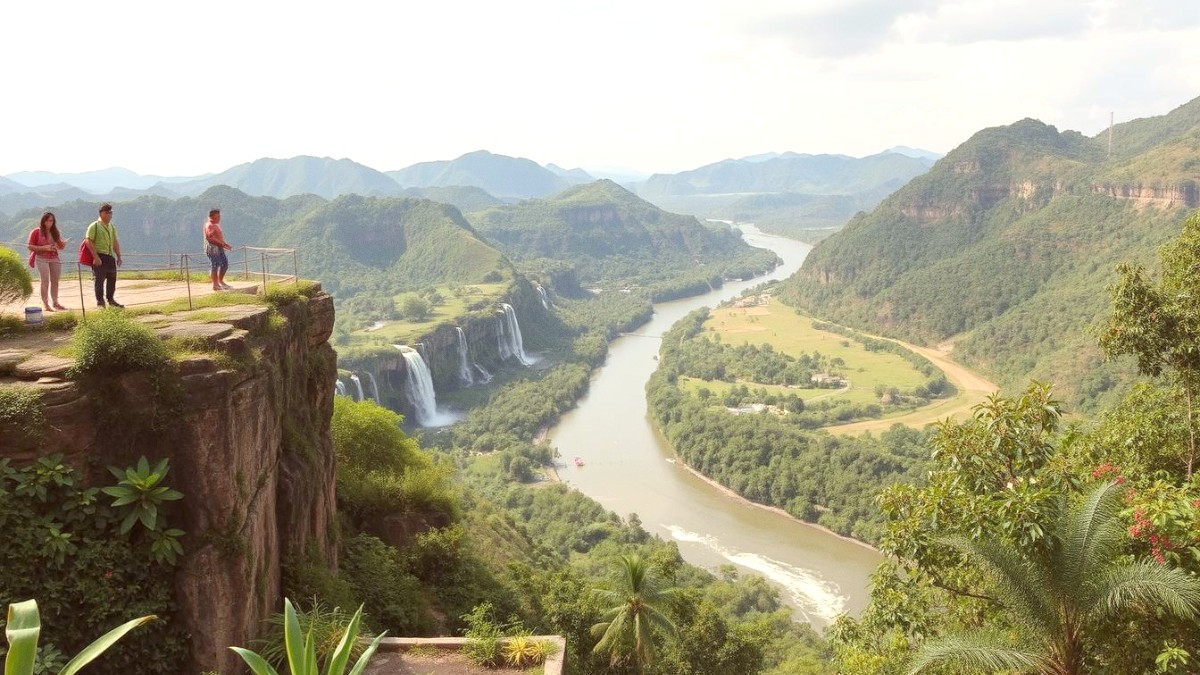
Southern Laos, Laos
The dry season (October to April) has warm to hot temperatures and significantly less rainfall. October to February are generally cooler and drier, with average temperatures from 22°C to 30°C. Humidity levels are at their lowest, making for comfortable days and pleasant evenings. This period consistently is the most comfortable time to visit. Skies are typically clear, presenting excellent conditions for photography and outdoor exploration. The rivers are at lower levels, revealing more of the Mekong's sandbars and islands.
March to April see temperatures rise considerably, often exceeding 35°C, especially in April. This period precedes the monsoon, and the air feels very dry and hot. While humidity is lower than the wet season, the intensity of the heat makes midday outdoor activities challenging. Schedule your most strenuous activities for early mornings or late afternoons. The wet season (May to September) has high temperatures, high humidity, and frequent, heavy rainfall. Rain often arrives as intense afternoon downpours or thunderstorms, rather than continuous all-day rain.
Monsoon rains occur from May to September, typically intense but short-lived afternoon downpours. These sometimes lead to localized flooding, especially near rivers. Landslides are possible in hilly terrain on rare occasions. Monitor local weather reports. March and April are the hottest months, with temperatures exceeding 38°C. This heat sometimes causes discomfort. Plan outdoor activities for early morning or late afternoon to avoid the most intense heat. Stay hydrated.
Waterfall Visits on the Bolaven Plateau are optimal from October to February. During the wet season (June-September), the waterfalls are at their most powerful and spectacular, but trails can be muddy. Mekong River Activities in Si Phan Don are best during the dry season (November-April), with lower water levels revealing more islands. Motorbiking the Bolaven Plateau Loop is ideal during the dry season (October-February) for comfortable conditions and clear roads.
Localized flooding & possible landslides.
May to September
Heavy rain, muddy trails, increased mosquito activity.
Heatstroke & dehydration concerns.
March to April
Temperatures exceed 38°C. Limit strenuous midday activities.
Rural areas still contain UXO.
Keep to marked paths. Never touch suspicious objects.
If you see something suspicious, report it to local authorities.
Many nationalities obtain a Visa on Arrival (VOA) at Pakse International Airport (PKZ) and various land border crossings. This option requires a valid passport, two passport-sized photographs, and a visa fee. The process is quick upon arrival. An electronic visa (eVisa) is available through the official Lao PDR eVisa portal. Apply online before your trip. This method is generally for convenience, as it speeds processing time at the border. The eVisa is typically for a single entry and a 30-day stay. You receive an approval letter via email, which you present upon arrival.
Your passport must be valid for at least six months beyond your intended departure date from Laos. Keep at least one blank page for the visa stamp. For Visa on Arrival, you typically need two recent (taken within the last six months) passport-sized photographs (4cm x 6cm). For the eVisa application, you upload a digital photo. If applying for a VOA, forms are available at the entry point. For the eVisa, you complete the form online.
Ranges from USD 30 to USD 40, depending on nationality. Additional "overtime fee" of USD 1-2 applies for off-hours.
Standard eVisa fee is USD 50, plus a processing fee. Paid online.
Usually US Dollars. Thai Baht or Lao Kip may receive acceptance at less favorable exchange rates.
No special permits generally for standard tourist activities. Inquire for remote/restricted areas.
No mandatory vaccinations, unless from a yellow fever endemic area. Consult travel clinic for recommendations.
No vaccinations are legally required for entry into Laos from most countries, unless arriving from a yellow fever endemic area. Consult a travel health clinic or your doctor at least 4-6 weeks before your trip for recommendations. Common recommendations include Hepatitis A and B, Typhoid, Japanese Encephalitis (for longer rural stays), and Rabies (if animal contact is likely).
Pakse has a provincial hospital (Champasak Provincial Hospital) and some private clinics. Facilities are basic compared to Western standards. For serious medical emergencies, evacuation to Thailand (e.g., Ubon Ratchathani, Bangkok) is often a recommendation due to more advanced medical infrastructure. Several pharmacies operate in Pakse city center, offering basic medications.
Consider bringing security-focused items for your peace of mind.